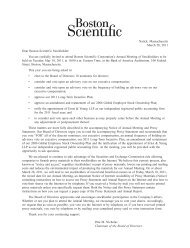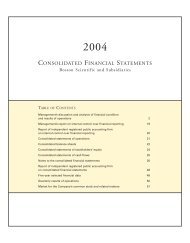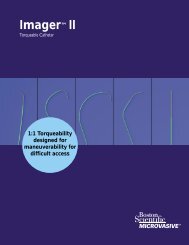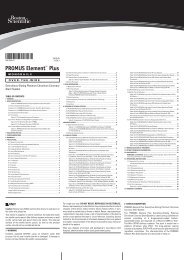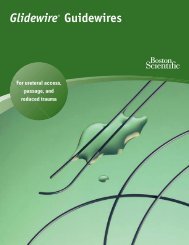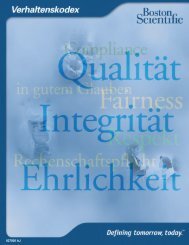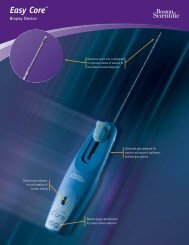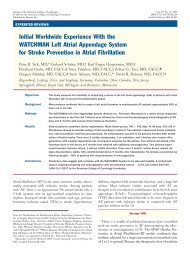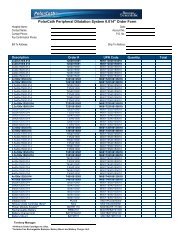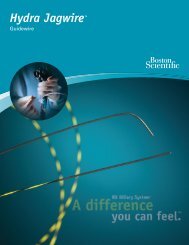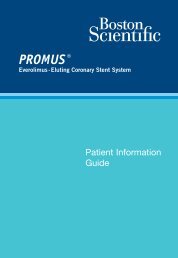Physician Reimbursement Primer for Cardiac ... - Boston Scientific
Physician Reimbursement Primer for Cardiac ... - Boston Scientific
Physician Reimbursement Primer for Cardiac ... - Boston Scientific
Create successful ePaper yourself
Turn your PDF publications into a flip-book with our unique Google optimized e-Paper software.
Chapter 6<br />
resistance 577, threshold .4 volts at .5 with a shock resistance 41. The safe sheath was<br />
passed over the guide wire and threw it the rapid 0 sheath passed to the right atrium. A<br />
quadripolar electrode was used under simultaneous fluoroscopic and electrical<br />
monitoring to easily engaged the coronary sinus. The electrode was replaced with the<br />
balloon catheter and using 10 cc of Omnipaque a coronary sinus venogram was<br />
obtained. Approximately one hour and 30 minutes of time was next to utilize to engage<br />
one of the lateral branches off the coronary sinus tract the middle veins arose from an<br />
excessively acute angle and although the guide wire could be passed, the electrode<br />
would not tract along it. The upper veins repeatedly produced diaphragmatic\E\phrenic<br />
nerve stimulation. Eventually, a more medial branch of one of the upper lateral veins<br />
accepted the Easy Track model 4538 electrode without phrenic nerve stimulation. That<br />
left ventricular lead had a threshold of 3.5 volts, resistance 609 and R waves 3.4. With a<br />
finishing wire in place the sheath was cut free without disturbing electrode. The safe<br />
sheath was broken free. With the retained guide wire the atrial lead was inserted using a<br />
model 44 7 0 and positioned in the right atrial appendage with P. waves 4.0, resistance<br />
432 and threshold .4 volts. The device was a Contak Renewal 3 model2. All of the<br />
electrodes were placed into the device, the set screws tightened and normal sensing and<br />
pacing confirmed. The device fit com<strong>for</strong>tably in the pocket in the subcutaneous tissue<br />
was approximated with interrupted 3 0 Vicryl. The anesthesiologist induced anesthesia<br />
and a single shock of 21 joules produced conversion of the ventricular fibrillation which<br />
had been induced by a shock on T. The wound was stable and dressed. The patient<br />
awoke from anesthesia. He was transferred to his room. There are no complications.<br />
Outpatient Coding:<br />
Procedures<br />
CPT<br />
Codes<br />
Implantation of biventricular defibrillator 33249<br />
Fluoroscopy 71090<br />
Insertion of LV lead via coronary sinus 33225<br />
DFT testing 93641<br />
*Individual symptoms, situations, circumstances, and results may vary. This in<strong>for</strong>mation<br />
is not intended to be used <strong>for</strong> medical diagnosis or treatment or as a substitute <strong>for</strong><br />
professional medical advice. Patients should consult a physician or qualified health care<br />
provider regarding their medical condition and appropriate medical treatment. This<br />
in<strong>for</strong>mation is to be used in conjunction with other resource material, which may include<br />
the applicable patient handbook, device physician's manual, and any implant accessories<br />
instructions <strong>for</strong> use.<br />
48 <strong>Physician</strong> <strong>Reimbursement</strong> <strong>Primer</strong> <strong>for</strong> <strong>Cardiac</strong> Rhythm Management



